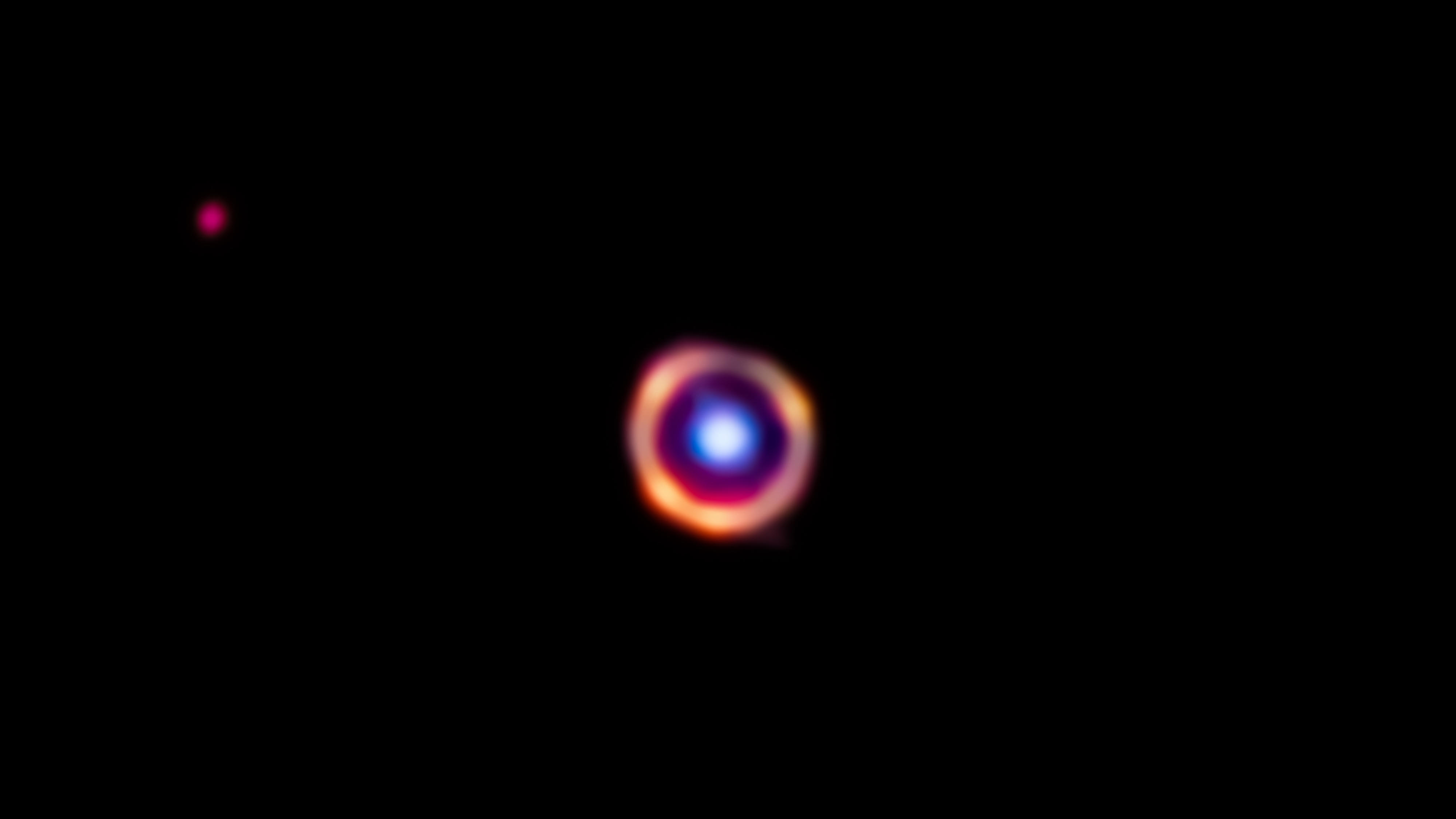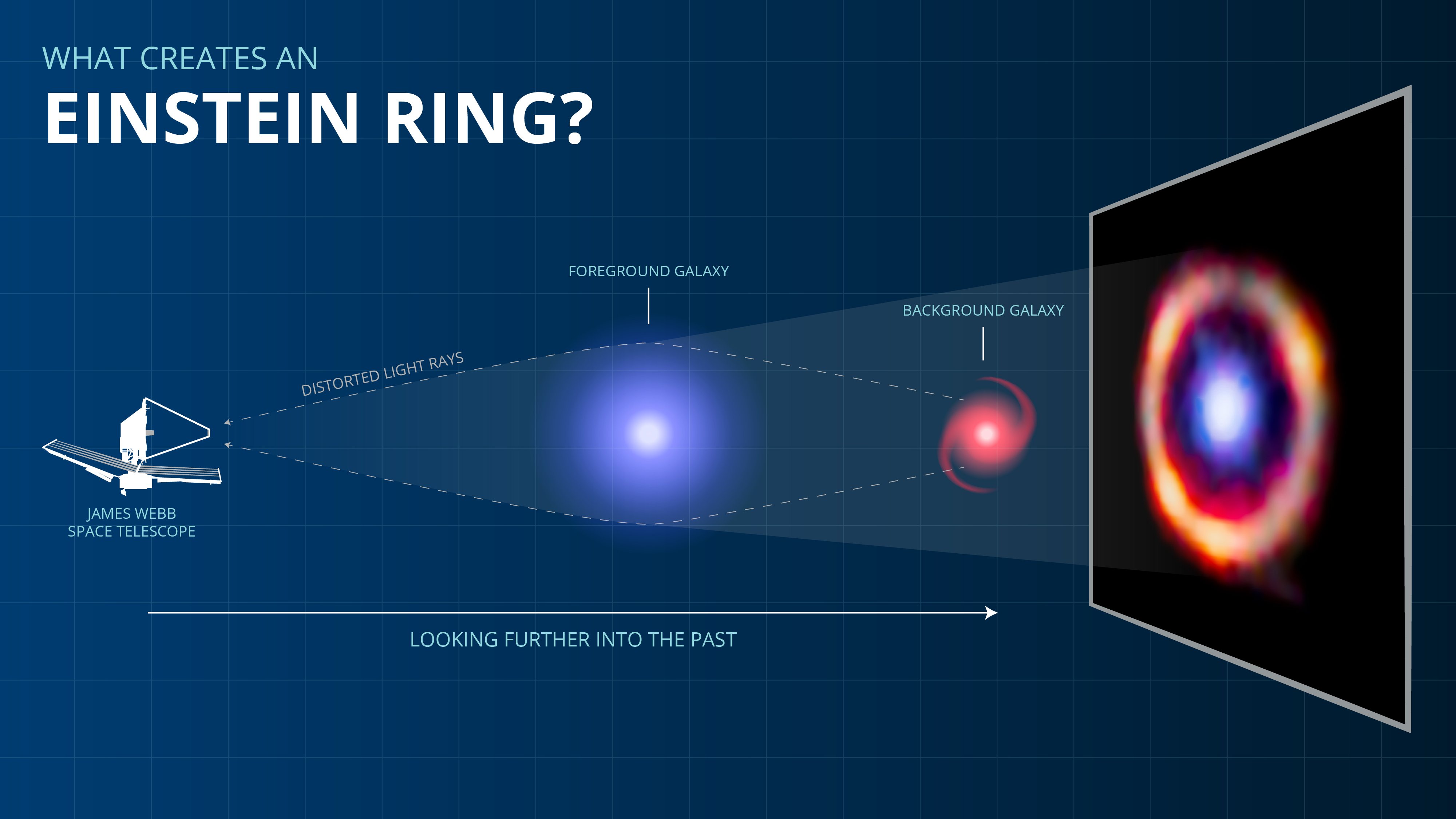
Astronomers have detected the oldest known examples of complex organic molecules in the universe, a new study reports.
These chemicals — much like ones found in smoke and soot on Earth — reside within an early galaxy that formed when the universe was about 10% of its current age, according to the study.
The carbon-based molecules, technically known as polycyclic aromatic hydrocarbons, are found in oil and coal deposits on Earth, as well as in smog.
"The molecules we found aren't simple things like water or carbon dioxide," study lead author Justin Spilker, an astronomer at Texas A&M University in College Station, told Space.com. "We're talking about big, floppy molecules with dozens or hundreds of atoms in them."
Related: Our expanding universe: Age, history and other facts
These complex organic molecules are common in space, where they are often linked to tiny dust grains. Astronomers investigate them because they can help reveal key details of activity within galaxies — for instance, they help influence the rate at which interstellar gas cools. However, detecting these molecules in very distant galaxies that formed when the universe was relatively young has been challenging, because telescopes were limited in their sensitivity and the number of wavelengths of light they monitored.
Now, using NASA's extraordinarily powerful new James Webb Space Telescope (JWST), Spilker and his colleagues have detected these molecules in a galaxy known as SPT0418-47 more than 12 billion light-years from Earth.
"It's remarkable that the universe can make really large, complex molecules very quickly after the Big Bang," Spilker said.
Given the extreme distance of SPT0418-47, the light the astronomers detected began its journey less than 1.5 billion years after the Big Bang. (The universe is currently about 13.8 billion years old.)
"This pushes back the old record for detections like this by about an extra billion years," Spilker said.
The discovery was made with the help of a warp in the fabric of space-time known as a gravitational lens. Albert Einstein discovered that mass distorts space-time, a bit like how a bowling ball might stretch a rubber sheet it was resting on. The greater the mass of an object, the more space-time curves around the item, and so the stronger the object's gravitational pull is. The way in which gravity behaves means that it can bend light like a lens, so a powerful gravitational field, such as that produced by a massive cluster of galaxies, can act like a giant magnifying glass.
Astronomers detected the previous record-holder for the oldest complex organic molecules using more than a full-day's worth of observations by NASA's Spitzer Space Telescope, Spilker said. In comparison, using JWST, "we only stared at this galaxy for a grand total of one hour," he said. "Webb really makes looking for organic molecules look too easy."
Related: 12 amazing James Webb Space Telescope discoveries

In addition, whereas previous efforts to detect complex organic molecules in ancient galaxies could only tell if the chemicals were there or not, "Webb's resolution lets us see actual details of where within a galaxy the molecules are located instead of just whether or not they are there at all," Spilker said. In SPT0418-47, the presence of these molecules is not uniform across the galaxy, the reason for which remains to be explained.
All in all, these new findings suggest that "it's possible for galaxies to form in overdrive," Spilker said. "The galaxy we studied is already just as massive, and its stars have formed just as much carbon and oxygen, as our own Milky Way, even though it's only a tenth the age. It's like a third grader who's already lived an entire career — gone to college, accomplished a career's worth of work, and then retired at age eight. The new results from Webb imply that it's not actually very difficult for galaxies to produce really complex molecules through all this rich chemistry going on in space."
In addition, scientists had previously thought these complex organic molecules were linked with star formation. However, the new data revealed this might not always prove true — Spilker and his colleagues found lots of regions with these molecules but no star formation, and others with new stars forming but none of these molecules, he said.
"Finding these big, complex molecules in galaxies when the universe was very young is one of those things that a lot of astronomers were hoping and expecting Webb to do, and I hope that the lessons we learned from this first attempt can help all of us as we move forward," Spilker said. "I'm eager to push to even more distant, younger galaxies — can we eventually find one that just hasn't had enough time for molecules this big to form? I'd also like to understand a lot better why these molecules exist in some regions of galaxies but not others. What was special about the regions with the molecules that allowed large molecules to form rapidly?"
Spilker cautioned that the JWST mid-infrared instrument (MIRI) used to make the new findings "appears to have declining performance right now. NASA has a team of very good engineers who are currently investigating the cause of the problem. But if the performance continues to deteriorate, it may make studies like this one impossible after the next year."
The scientists detailed their findings online today (June 5) in the journal Nature.







